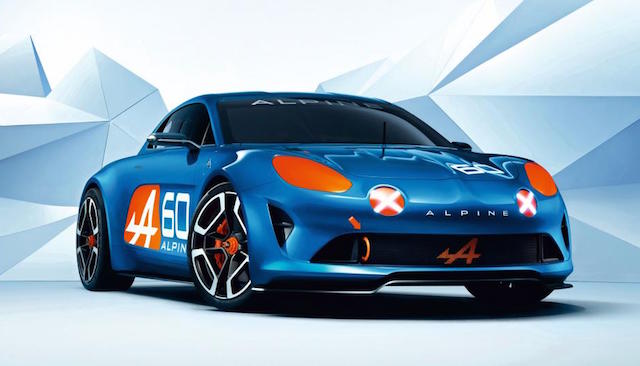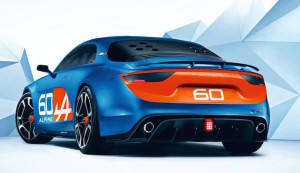
The “beautiful surprise” Renault promised for this weekend’s Le Mans event to celebrate 60 years of the Alpine brand is a rear-engined two-door coupe that echoes the iconic style of the Alpines from the 1960s and 1970s.
The blue and orange show car completed a lap of the circuit behind an old Alpine A110 racer just 90 minutes before the start of the annual endurance race.

The concept car gets a low profile, creased bonnet and gaping air intakes, as well as a sleek, lengthened rear window – much like the classic A110.
It uses a rear engine, rear-wheel-drive setup, but Alpine hasn’t released details on capacity, power and torque. The masked headlamps are a nod to its race and rally car roots, while the rear spoiler adds downforce at high speeds.
The design of the wheels also harks back to a style popular on the A110 and A310, in this case with big brakes and orange callipers.
Said ?Alpine design director Antony Villain: “We envisaged the Alpine Celebration show car as the crowning glory of six decades of Alpine style and motor racing.”
Renault’s global Twitter account had been running a countdown screen pointing to the unveiling on Saturday, June 13. The car will go into production next year and mark the revival of the Alpine nameplate, a project Renault and British sports car company Caterham began in 2012.
But Renault bought out Caterham’s stake in the joint venture in mid-2014 and has since worked on final development with its alliance members Nissan and Daimler.

Renault has been relatively tight-lipped about the car, built to rival the Alfa Romeo 4C. It is codenamed ‘Alpine Sport 1’ (AS1), is expected to weigh around 1100kg and be powered by a turbocharged four-cylinder 1.6-litre engine generating around 223kW.
RenaultSport boss Patrice Ratti has told the European motoring press that the new Alpine will be “more about driving pleasure than pure power.” Renault vice president Bruno Ancelin confirmed a new Alpine model range, with perhaps a sedan and hybrid in the line-up.
“What we are sure of is that we cannot revive a brand or create a brand with a single model,” Ancelin said. “It’s not sustainable to have a single model, it’s impossible.
“For example, if you want to be sustainable in some markets you need a hybrid in the line-up. We’d have highly differentiated models.”

Ancelin said that to ensure sustainability Renault would have to be open to various ideas. “Which technology and which kind of engines do we need, which kind of body styles, will all of them be sporty cars or will some of them be SUVs? We must address all these questions,” he said.
The Alpine name dates back to the early 1950s when Jean Redele, a mechanic and garage owner from Dieppe, began racing lightweight cars with fiberglass bodies and Renault engines. He badged the racers Alpine.
His most successful model was the A110. It first appeared in 1961 but is best known for finishing 1-2-3 in the 1971 Monte Carlo Rally. Renault bought Alpine from Redele in 1973 and continued to turn out sports cars, including the Alpine GTA.
But none of them captured the magic of the A110. Renault shut down the Alpine line in 1995 with the A610 and turned the Dieppe plant into the base for RenaultSport models.
